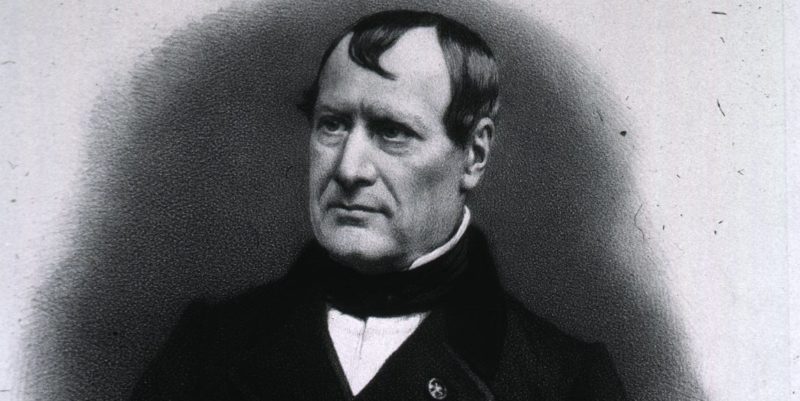We explain what the medulla oblongata is and what its anatomy and structure are like. Also, what are its features and functions.
What is the medulla oblongata?
The brainstem or brainstem is located at the nape , between the spinal cord and the brainstem bridge. It is an extension of the spinal cord.It is through this medulla oblongata that nerve impulses from the spinal cord and the peripheral nervous system reach the brain .
Here the nerves of both cerebral hemispheres cross and it is precisely where the nerves coming from the right hemisphere separate and go to the left side and vice versa.
Stimuli from the body pass without exception through the medulla oblongata . In this way the brain is informed of what is happening in the different parts of the body .
Historical studies on the medulla oblongata
 The history of neurology has its beginnings and notable advances with the figure of Pierre Flourens (1794-1867), a French biologist who carried out theoretical and practical research on animals .
The history of neurology has its beginnings and notable advances with the figure of Pierre Flourens (1794-1867), a French biologist who carried out theoretical and practical research on animals .He is considered one of the founders of experimental neurobiology . It was he who discovered that the removal or involvement of the medulla oblongata produces death.
Medulla oblongata morphology
It is shaped like a truncated cone but with the base up and back.Its measurements are: 1.5 cm in diameter; 3 cm high and 1.3 cm thick . Its weight is between 6 and 7 gr.
Medulla oblongata limits
It is located between the spinal cord and the brainstem bridge . It is bordered at the top by the lower edge of the pons and at the bottom by the spinal cord at the decussation of the pyramids.
Medulla oblongata anatomy
For its study it is divided into 3 thirds:
- Lower third Where is the pyramidal decussation.
- Middle third. Where the sensory type decussation happens.
- Upper third. Where are the bulbar olives.
External organization of the medulla oblongata
 The medulla oblongata constitutes a lower part of the brainstem. It is divided into 3 faces:
The medulla oblongata constitutes a lower part of the brainstem. It is divided into 3 faces:
- Previous face. Here is a channel or cleft called the anterior median fissure that continues the structure of the same name present in the spinal cord. On its sides are the pyramids that form a kind of white columns and it is precisely here that the nerve fibers cross from one hemisphere to the opposite side of the body. There they form the decussion of the pyramids. Outside these pyramids is the pre-olive groove. It is there that the greater hypoglossal nerve is born.
- Side face. On the sides of each pyramid there is an oval-shaped area called an olive. This area marks the lower olive grove. Behind this is the posterolateral sulcus, where the glossopharyngeal, vagus, and accessory nerves meet.
- Upper side. In the middle zone is the posterior medial sulcus. On both sides the Goll's cord and the Buldach cord are born and divided.
Internal organization of the medulla oblongata
Regarding its internal organization, it is subdivided into 4 parts or levels:
- Pyramids decussation level
- Level of decussation of lemnisci
- Olive level
- Lower level or brainstem bridge
Main function of the medulla oblongata
 The medulla oblongata ensures the entry and exit of information between the brain and the peripheral nervous system (PNS). It connects all the information that comes from the organism so that the brain informs itself and acts accordingly.
The medulla oblongata ensures the entry and exit of information between the brain and the peripheral nervous system (PNS). It connects all the information that comes from the organism so that the brain informs itself and acts accordingly.In other words, the medulla oblongata is in charge of basic and vital functions . In the event of accidents, it causes immediate death due to respiratory or cardiac arrest.
Other functions of the medulla oblongata
- Regulates the secretion of gastric juices from the stomach
- Controls sneezing, swallowing, vomiting and coughing as well as all the muscles involved in these tasks
- Regulates balance
- Act on phonation
- It intervenes in the awakening each morning of the person . That's where the phrase "internal clock" comes from.
- Regulates the movement of the eyes
Complications of the organism
Some complications of the organism can affect the medulla oblongata. Some examples are:
- Congenital or degenerative problems
- Vascular complications
- Tumors
- Problems with metabolic origin of infectious and inflammatory characteristics
Medulla oblongata pathologies

- Multisystemic atrophy
- Lateral sclerosis
- Amyotrophic Lateral Sclerosis
- Medulla oblongata cancer
- Multiple sclerosis
MA student of the TransAtlantic Masters program at UNC-Chapel Hill. Political Science with a focus on European Studies. Expressed ideas are open to revision. He not only covers Technical articles but also has skills in the fields of SEO, graphics, web development and coding. .
Leave a reply
Your email address will not be published. Required fields are marked *Recent post

Sport: What Is It, Types, Risks, Features, Characteristics and Examples
September 23, 2021

Dogs: Emergence, Features, Characteristics, Feeding and Breeds
September 24, 2021

Story: Definition, Elements, Structure, Features and Characteristics
September 24, 2021

Essay: Definition, Structure, Features, Characteristics, How to Do It
September 24, 2021
